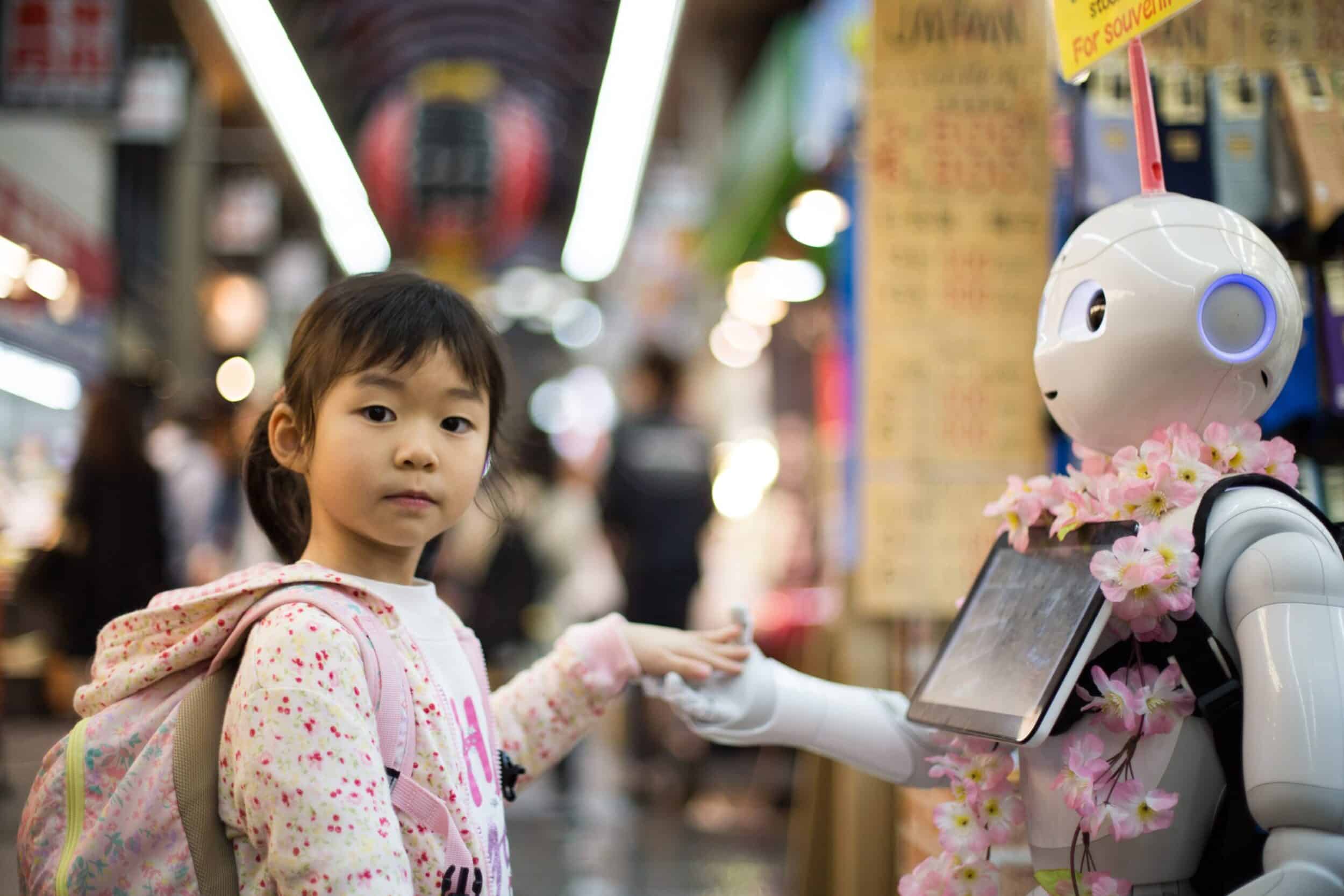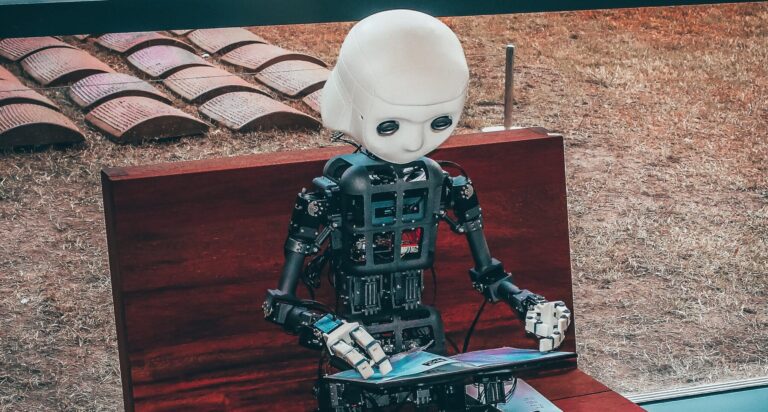4 Types of Artificial Intelligence Improving Human Lives
Types of artificial intelligence have become a hot topic in recent years, as technology continues to advance at an incredible rate. AI has become an integral part of everyday life, and its potential impact on humanity is just the beginning.
AI can revolutionize many industries, such as the role of artificial intelligence in finance and healthcare, by making tasks easier, more productive, and more accurate. No matter what industry you’re in, artificial intelligence can help you reach your goals faster and more effectively.
But what types of AI are available? And how can they help improve our lives on a daily basis? This post will explore four types of artificial intelligence that are improving human beings in remarkable ways. From laundry-folding robots to healthcare chatbots, these cutting-edge technologies offer incredible opportunities for individuals and businesses alike. Read on to see how you can leverage this powerful new technology!
What is Artificial Intelligence?
Artificial Intelligence is a branch of computer science that deals with creating intelligent machines that can work and react like humans. In other words, its purpose is to help computers gain the ability to make decisions for themselves.
The term “artificial intelligence” was first coined in 1956 by a computer scientist named John McCarthy. AI comes in many forms and can be used for different applications.
As artificial intelligence continues to evolve and become more refined, it can help in a variety of ways. You can witness the use of artificial intelligence increasing every day, from controlling self-driving cars to analyzing medical images for signs of cancer.
There is no doubt that artificial intelligence will revolutionize and shape our future. It will also bring in new incredible opportunities and insights we never imagined before.
By understanding the different types of artificial intelligence, we can gain a better idea of how they work and how to best leverage them for our advantage in life. The possibilities are truly endless. Still, worried about the advantages of Artificial intelligence? Check it out here!
With the right type of artificial intelligence for the task at hand, machines can outperform humans in some areas – making them invaluable tools when it comes to tackling complex problems.
Looking to know more about the benefits of artificial intelligence? Click to learn more!
4 Different Types of Artificial Intelligence
The types of artificial intelligence are categorized based on their functionalities. There are four types of artificial intelligence transforming the digital world: reactive machines, limited memory, theory of mind, and self-awareness. Let’s understand each type of Artificial Intelligence in detail.
1. Reactive Machines
Reactive machines are one of the best types of artificial intelligence, responding to immediate stimuli but not storing or learning from past experiences. The classic example of a reactive machine is Deep Blue, the computer that defeated world chess champion, Garry Kasparov, in 1997.
Another example of a reactive machine is a simple robotic vacuum cleaner. It is programmed to move around a room and detect obstacles, such as furniture or walls, and avoid them.
It adjusts to changes at the moment, changing direction to keep cleaning, however, unable to recall the room’s setup nor use prior experiences to modify its cleaning.
Overall, reactive machines are useful for performing simple tasks that require quick responses to stimuli, but they cannot learn and adapt like more advanced forms of artificial intelligence.
2. Limited Memory Artificial Intelligence
Limited memory artificial intelligence is more advanced than reactive machines and can use data it has stored over time to make decisions. It stores information in a memory system, allowing it to “remember” past experiences and use them to inform decisions in the future.
Memory-based AI can also learn from experience, making it more capable of solving complex problems. This makes it better at navigating dynamic environments, planning, and decision-making than reactive machines.
Limited memory machines are similar to reactive machines but with one key difference. They can store limited memories for future use. This allows them to understand the context and draw upon past experiences when making decisions.
You can see some examples of limited memory machines in the Google self-driving car. As the car drives, the onboard computer stores map data, so that it knows exactly where it has been and where it needs to go next.
It doesn’t have long-term memory like humans; it wouldn’t know where it went two weeks ago.
Some other Examples of limited memory AI include AlphaGo. It’s a computer program that defeated the world Go champion Lee Sedol, and personal assistants like Siri and Alexa.
3. Theory of Mind Artificial Intelligence
Theory of mind artificial intelligence uses sophisticated algorithms to learn about the world around it and make decisions often with impressive accuracy.
As one of many types of artificial intelligence, this specific AI focuses on understanding the mental states of other agents and how they interact with the environment. For instance, their beliefs, intentions, and emotions. AI uses algorithms and machine learning to understand the world and make decisions based on how others think and act.
With this data, the AI can assess various types of situations quickly and accurately, making it possible to overcome challenges with more speed than ever before. The potential of the theory of mind AI makes it a truly exciting development in computing.
An example of the theory of mind machines includes the ability to understand sarcasm and hold a conversation.
4. Self-Aware Artificial Intelligence
Finally, self-aware artificial intelligence can recognize patterns, anticipate needs, and make decisions based on its own experiences.
Self-aware artificial intelligence (AI) can learn from its environment and use that knowledge to make decisions without being explicitly programmed.
This is one of the types of artificial intelligence that can identify patterns in data, anticipate needs, and make decisions based on its own experiences. In addition, it can learn from past experiences and use that knowledge to optimize its performance.
Self-aware artificial intelligence helps to develop applications such as natural language processing, robotic process automation, and computer vision.
It can improve customer service and marketing efforts, as well as improve the efficiency of decision-making processes.
Conclusion: Types of Artificial Intelligence
AI has already made Strides in the medical, retail, finance, and automobile industry. There are different types of artificial intelligence we discussed in this post: Reactive Machines, Limited Memory Artificial Intelligence, Theory of Mind Artificial Intelligence, and Self-Aware Artificial Intelligence. Each of these provides a unique way to improve human lives.
So far we have mainly only scratched the surface when it comes to what AI is capable of. Who knows what the future holds for this fascinating field? That’s right! Different types of artificial intelligence are rapidly evolving and applications, and it is becoming increasingly integrated into our daily lives.
The four we discussed today are just the beginning of what is possible with this technology. Stay tuned for more blog posts related to AI where we will discuss other applications of AI and how they are changing the world as we know it.
FAQs: Types of Artificial Intelligence
What are the 4 types of artificial intelligence?
The four types of artificial intelligence (AI) are:
- Reactive Machines – These AI systems are designed to react to specific situations but do not have the ability to learn from past experiences.
- Limited Memory – These AI systems can retain past experiences and use them to make decisions but only for a short period of time.
- Theory of Mind – These AI systems have a deeper understanding of human emotions, beliefs, and thoughts, allowing them to interact with humans on a more personal level.
- Self-Aware – These AI systems are the most advanced and have the ability to understand their own existence and emotions, similar to human beings. However, self-aware AI is still in the realm of science fiction and not yet a reality.
What is the most common type of AI?
What are the five main areas of AI?
The five main areas of AI are:
-
Expert Systems – These are computer programs that are designed to solve complex problems by emulating the decision-making ability of a human expert.
-
Natural Language Processing (NLP) – This area of AI involves teaching machines to understand, interpret, and generate human language.
-
Robotics – This area involves developing machines that can perform tasks in the physical world, such as assembling products or performing surgery.
-
Computer Vision – This area of AI focuses on teaching machines to interpret and understand visual data, such as images and videos.
-
Machine Learning – This is the most well-known area of AI and involves teaching machines to learn from data without being explicitly programmed. Machine learning is used in a wide range of applications, from image recognition to fraud detection.











